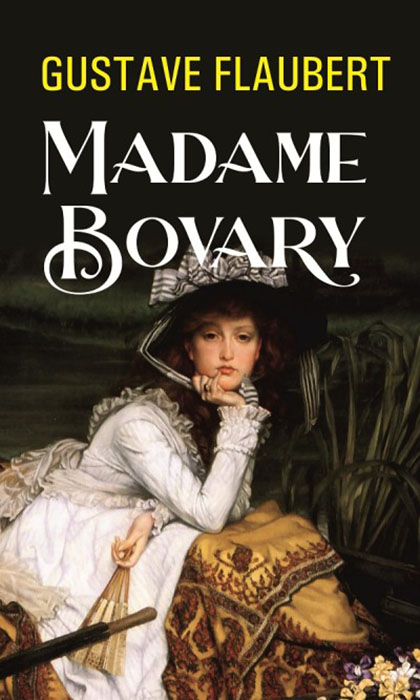
Whether you are a “BookTok” veteran, casual enjoyer of contemporary fiction, or astute literature connoisseur, you have most likely encountered the bad woman trope at some point. Also referred to as the “messy” or “unhinged” woman, this trope has become exponentially popularized in recent years. If you haven’t heard of this trope, let me summarize it. To preface also, I will make some general statements about what is typical of this trope, however this does not mean they are hard and fast rules, and there are plenty of exceptions.
The bad woman protagonist is typically aged 20-40, from a dysfunctional, if not outright abusive, middle- to upper-class family, often a struggling artist, working a dead-end job, for some reason usually living in New York City, if only recently. She is almost always selfish, lonely, and arguably unlikeable. Typical elements and themes of the genre/trope are introspective, character-focused narratives. These are not usually plot-heavy books and leave many readers disgruntled and rushing over to Goodreads to write “Nothing happens in this book!” Fair enough. The bad woman protagonist is often presented satirically; a vessel for exploring the meaningless of life under capitalism, fantasy, dissatisfaction with men and romance, the nature of desire, alienation, gender roles, and existentialism.
Some credit Ottessa Mosfegh’s commercial and critical success, My Year of Rest and Relaxation, with putting this trope on the map for modern readers, but it originated long before Mosfegh. From the titular character in Madame Bovary by Gustave Flaubert published in full in 1857, to the neurotic Blanche Dubois of Tennesse Williams’ play A Streetcar Named Desire, written almost a century later, these “bad woman” characters have historically smitten both authors and audience members alike.
Where did this trope come from? It’s hard to pin down exactly, although there’s clear overlap with the “mad woman” or mad woman in the attic trope. This term you’ve probably heard, as it refers to the classic novel Jane Eyre by Charlotte Brontë, published in 1847. Rochester, aka the hero and love interest of the protagonist, keeps his first wife literally locked in the attic due to her “violent and hysterical” behavior. Later, she conveniently kills herself, so Rochester and Jane can go ahead and tie the knot. Ah, romance.
To me, the messy/unhinged/bad woman trope feels like the brash, contrarian, self-destructive daughter of the classic mad woman trope. Instead of being locked in the attic like Bertha Rochester, or shipped off to the asylum a la Blanche in Streetcar, the contemporary bad woman pays for her own apartment, works a deadend job, binge watches TV, and embarks on unsatisfying Tinder hookups to fill the void. While the mad women trope practically always ends in tragedy, the modern bad woman often (but not always) finds unconventional victory in some form. The bad woman seems to possess much of the freedom and agency that mad woman characters long for. Both tropes embody the characters’ struggle under the constraints of their environment, as well as an everpresent sense of purposelessness. While the mad woman sits restlessly at the window, daydreaming and longing for a romance, something that will bring her life meaning, the bad woman stands on the street outside smoking a cigarette after a one night stand, perpetually unsatisfied.
So why are we drawn to reading about messy, unlikeable, and amoral female characters in the first place? Well, because women are human; they are complicated, and many of us enjoy when they are allowed to exist imperfectly and act like pieces of shit, when they resist and fall outside of the angel or whore dichotomy. They embody the contradictions of human existence and explore the nature of longing. These women are not heroes, they don’t have a fight or a profound purpose, and they aren’t all that important. The antagonist for the bad woman is really her own boredom, restlessness, and internal chaos. As we delve further into winter, a time that for many prompts introspection, self reflection, and a kind of spiritual hibernation, I think we can all take some inspiration from the bad woman and allow ourselves to exist as the highly contractorary, multifaceted, sometimes shitty, selfish creatures that we are.
Here are a few “bad woman” protagonist books to fuel your transformation: Speaking of transformation… you’ve probably heard of Nightbitch by Rachel Yoder. Just recently released as a movie starring Amy Adams. A magical realism/horror novel where a mother slowly transforms into a dog.
Bunny by Mona Awad The movie Heathers meets the movie Raw, but you know, a book.
Luster by Raven Leilani
Madame Bovary by Gustave Flaubert
This book is by no means modern, but if you haven’t read it already, I highly recommend it. Not only is Emma Bovary arguably one of the original bad/mad women, but it is also regarded as one of the greatest novels of all time for Flaubert’s painstakingly intentional prose, as well as its themes that explore female sexuality, repression, and desire.
The First Bad Man by Miranda July
Boy Parts by Eliza Clark
The protagonist of this book is touted by many to be the “female Patrick Bateman.” Regardless of whether you agree, this is an uncomfortable, violent tale exploring the nature of consent, gender dynamics and power.
The Coin by Yasmin Zaher
The New Me by Halle Butler •



